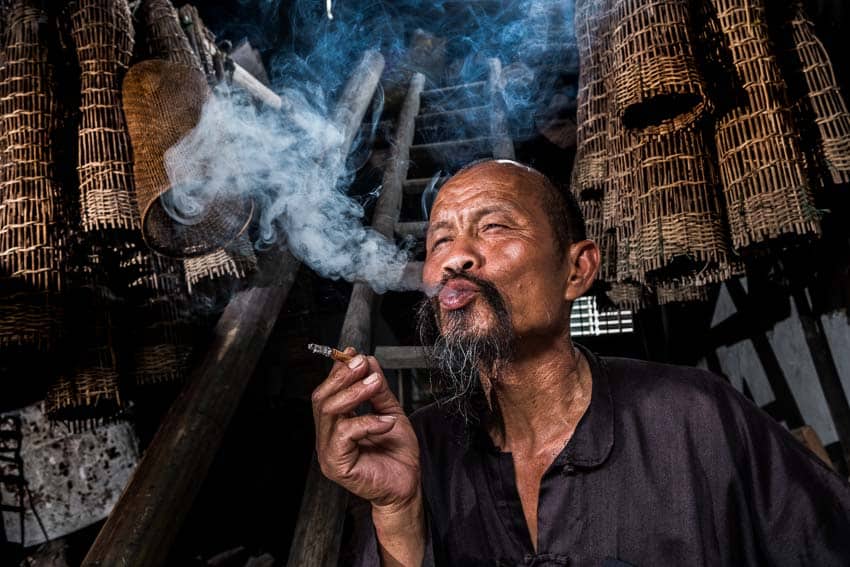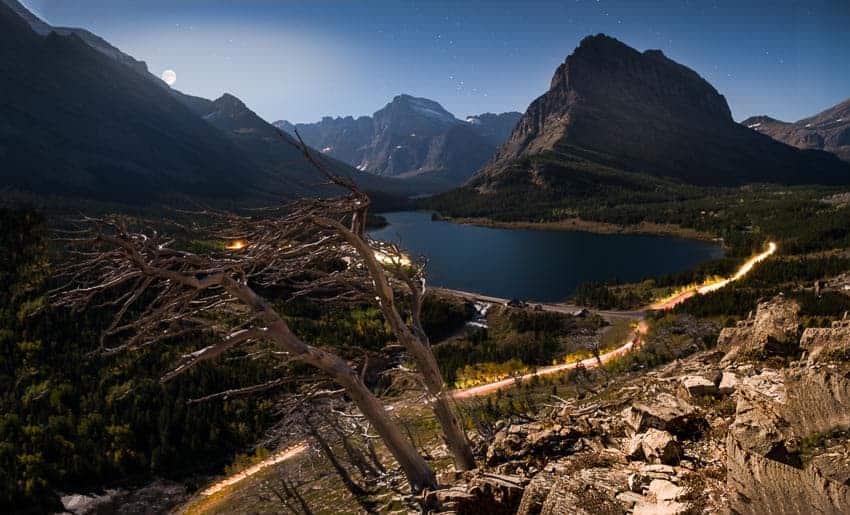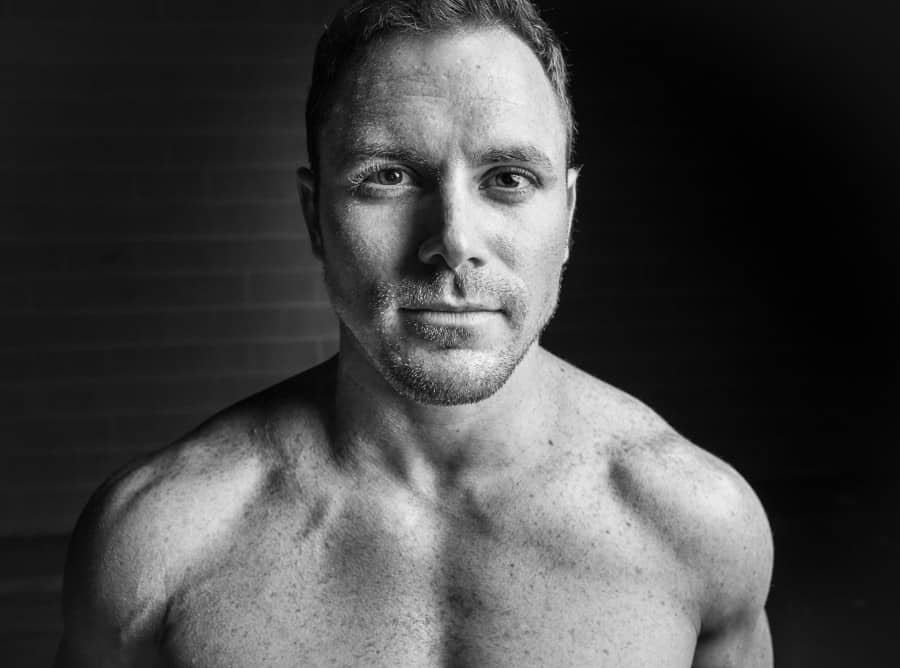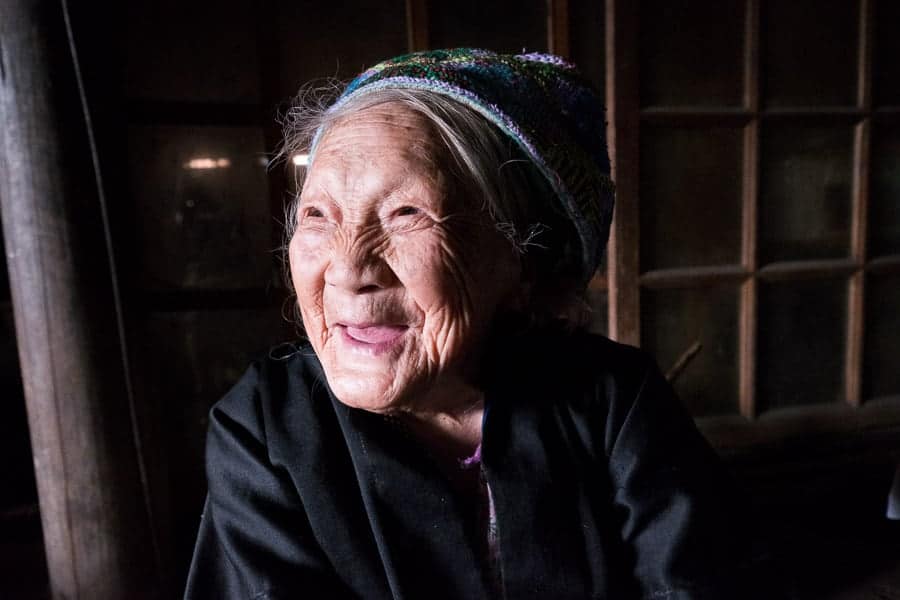What Are Mirrorless Cameras Good For

It's been most two years since I switched from a DSLR to a mirrorless photographic camera.
Personally, I love my mirrorless camera. In this mail service, I desire to share the features and benefits of mirrorless cameras that I enjoy.
However, I hope that after reading this, you don't call up that mirrorless is all rainbows and unicorns.
There are still Enough of benefits to DSLR cameras as well as drawbacks to mirrorless cameras, but that'south beyond the scope of this commodity.
Significantly Easier Manual Focus
For the last few years, transmission focus lenses accept been more than popular than at any time since the '80s.
Photographers are discovery treasure troves of manual focus lenses at cheap prices that perform well.
However, with a mirrorless photographic camera, manual focus is far more accurate than with a DSLR because the photographer tin utilise focus peaking and focus bespeak magnification to hands see exactly what is and is not in focus.
Weight
Contrary to what you may call back, the difference in weight between a mirrorless and DSLR photographic camera is usually quite minor.
Certain, a Fuji XT2 is WAY smaller than your one-time Nikon D810, but that'due south because the sensor size and consequently the lens weight is different.
When you lot really look at cameras with the aforementioned sensor size, the departure between the DSLR version and the mirrorless version is usually just a few hundred grams.
Mirrorless Camera
Mirrorless Weight (In grams)
Comparable DSLR Camera
DSLR Weight (In grams)
Weight Deviation (In grams)
Weight Deviation is equal to…

Fujifilm 10-T2 Mirrorless Digital Camera (Torso Merely) + Fujifilm VPB-XT2 Vertical Ability Booster
457
Nikon D500 (APS-C)
760
303
96 tea bags

Sony Blastoff a6500 Mirrorless Digital Photographic camera w/ 2.95″ LCD (Body Only)
420
Catechism 80D (APS-C)
650
230
ii bars of soap

Sony a7R Two Total-Frame Mirrorless Interchangeable Lens Camera, Body Only (Blackness) (ILCE7RM2/B), Base of operations, Base
587
Canon 5D four (35mm)
875
288
two bananas

Fujifilm GFX 50S 51.4MP Mirrorless Medium Format Photographic camera (Body Only)
820
Pentax 645z (Medium Format)
1500
680
17 expressionless parakeets
For me, saving 96 tea numberless or 17 expressionless parakeets from my bag is really quite helpful.
First of all, I don't drink tea, and secondly, the parakeets can be noisy at times.
But seriously, every gram counts as far as I'1000 concerned.
I oftentimes photograph far-flung corners of the world and I'll take any weight reduction I can get
I merely want to be clear that the weight savings is likely non every bit much as almost people imagine it would be.

Zebra Stripes & Alive Histogram
Zebra is a really cool camera feature that puts white blithe stripes, hence the name, on areas of a photograph that are overexposed.
On the other mitt, the histogram is just a graph showing y'all how much of the scene is completely blackness, how much each brightness level is moving all the style upwardly, and what is completely white.
A DSLR can show a histogram of a photo once you've taken it, and a FEW can in live view fashion.
Merely no DSLR can testify a live histogram in the viewfinder equally you lot're messing with camera settings and before taking the picture show.
Having a alive histogram showing up correct in the viewfinder is a huge benefit, which I use every time I have pictures with my mirrorless photographic camera.
Fuji doesn't take zebra stripes, simply it does have a alive histogram in the viewfinder.
Other mirrorless camera brands like Panasonic exercise offering information technology, though.
Information technology keeps me from needing to take a shot to test the exposure.
All I have to do is look in the viewfinder to see what I'grand going to get.
Preview of the Paradigm for Nighttime Photography
I mentioned already what a benefit it is to run into the epitome preview in the viewfinder for judging exposure, but for night photography, this has an additional benefit.
Suppose you're in the wood taking photos of the Milky Way on a DSLR.
When you look through the viewfinder, you'll essentially see nothing—it'll exist totally black.
Information technology'southward already dim with the naked middle looking outside, and at present yous're looking through a tiny hole where the low-cal has been passed through a prism and mirror and such.
You tin't judge your composition without taking a series of LONG exposures and waiting to see the resulting image and moving the ball head slightly until y'all get your composition. It's a pain.
With a mirrorless camera, you get the reward of the ISO of the photographic camera to boost the low-cal output of the scene right in the viewfinder.
With a mirrorless camera doing night photography, I tin easily see and set up the composition in seconds rather than a series of trial and fault shots with a DSLR.
A DSLR's LCD screen can exercise something like in taking advantage of the ISO, but the discontinuity is different, and then information technology won't give you an exact preview of what the image will be.
This works much more accurately and faster on a mirrorless camera.
Low Calorie-free Focusing
I'1000 sure in that location are exceptions to this one and people who volition disagree with me based on a specific camera circumstance.
Still, in my experience of traveling around the world many times shooting night photography with readers of this web log, I've seen that those with mirrorless cameras are often able to focus for night photography MUCH easier than the DSLR crowd.
I was in Glacier National Park last year and spotted a patch of erstwhile dead trees on a mountainside. I scouted the expanse with Bart.

Size
I expected when I switched from a big DSLR to a mirrorless photographic camera that I would bring the smaller mirrorless camera with me more often.
Honestly, I haven't really found that to be true.
A mirrorless camera is smaller, but it still doesn't fit in my pocket by any means.
If it doesn't fit in my pocket, I've gotta hold it whether it'due south large or small.
Despite that, the size does make a difference in packing for travel photography.
I similar to employ the Mindshift Gear Rotation 180 Horizon and I pack it total each time I go out.
It'south dainty to accept smaller gear that fits more easily in a carry-on size pack.
However, think that if you switch to mirrorless merely still utilize a mirrorless with a large total-frame sensor, your size savings will exist very minimal.
The real deviation is if you accept advantage of the system switch to choose a smaller sensor photographic camera (APS-C is the perfect sensor size for my style of photography).
High Burst Rate Without Blackout
The burst rates available in many mirrorless cameras available today are insane!
I've listed some examples below which are impressive, especially because that these cameras are far less expensive than the DSLRs that could shoot a similar frame rate.
Nevertheless, non all mirrorless cameras accept high frame rates.
For example, the Sony a7r ii.
- Sony a6500 – 11 frames per 2d
- Nikon 1 V3 – 20 frames per 2d
- Olympus OMD Em5 – 9 frames per 2d
- Fuji XT2 – 11fps with mechanical shutter, 14 with electronic
Some other benefit of shooting a burst on a mirrorless camera is that generally, the autofocus does better between frames than on a DSLR considering the mirror isn't required to find focus.
Also, there is no blackout when shooting a outburst on some mirrorless cameras.
All DSLRs have viewfinder blackout when taking a motion picture.
Video Autofocus
Generally, the autofocus for video on a mirrorless camera is far superior to that of a DSLR.
Since the mirror needs to be flipped up for DSLRs to record video, the primary autofocus method is blocked.
Most DSLRs can only do dissimilarity-detection autofocus during video, which can exist quite poor.
However, some DSLRs are getting focus pixels in addition to the traditional focus methods simply these have fewer points.
And so in full general, I have to requite a point to mirrorless for autofocus during video, merely it depends on the specific camera.
Flying Under the Radar
Because mirrorless cameras don't look huge and professional to the untrained eye, I'm able to get shots in some situations where I wouldn't be able to otherwise. For example:
- At youth sports events, I don't get weird stares from other parents wondering if I'm a crank, or if I have a kid on the squad (yep, I've been asked earlier on more one occasion when shooting with a big lens and a DSLR).
- I photograph many locations when traveling where pro cameras are banned or require a special permit and there have been a number of times where I've made it through security because of the "Oh, that little vintage camera of mine? I just wanted a snapshot of my travel experience" excuse.
Again, this benefit is mostly negated if you lot shoot a full-frame mirrorless and are using a long lens.
But if you're shooting a curt lens or an APS-C or micro 4/three sensor camera, you'll get abroad with a lot!
Facial Recognition
I observe facial recognition to be a promising new technology.
Almost serious photographers are still manually choosing focus points, but the hope of what facial recognition could do is really encouraging.
Another benefit of facial recognition is that it can be helpful for automobile white residual. By and large, auto white residual is a pretty dumb engineering.
It recognizes colors and seeks to balance them out, but it doesn't actually know WHAT the scene is.
If the scene is naturally one color, the camera is oftentimes tricked.
All the same, if the camera can recognize a face, information technology knows approximately the color residuum a confront should be and is able to more accurately determine the white residual.
More Autofocus Points and Better Spread
To me, this is one of the biggest benefits of a mirrorless camera.
Most mirrorless cameras offer a loftier number of focus points, and the focus points are far more than spread across the entire frame than on an average DSLR.
DSLRs are starting to take hold of upwardly to what mirrorless cameras are delivering in terms of autofocus points simply notwithstanding fall far behind because of the inherent problems of having the mirror in the way.

Quieter
Mirrorless cameras are not silent, only they are significantly quieter than a DSLR about of the time.
When the quiet modes are engaged on some cameras like the Fujis, they tin can be near silent.
This is a really dainty benefit for photographing events such as a wedding anniversary, a blackness-tie event, etc.
All the same, at that place are exceptions to this as well.
The original Sony A7r was really noisy due to a loud shutter slap.
Focus Distance in the Viewfinder
This is a overnice petty do good when shooting night photography. On many mirrorless cameras similar the Fuji cameras, you tin can show how far your lens is focused from you lot, right in the viewfinder.
This is helpful when doing night photography to know when you lot're focused out to infinity, and it's much more authentic than the focus distance scale on most DSLR lenses.
Adapting Lenses from Other Systems
The native lens systems for mirrorless cameras are backside that of well-nigh DSLR systems in terms of the total quantity.
Nevertheless, the lenses being released for about mirrorless cameras are exceptional since they are using the latest technology and newest lens designs.
Just when y'all tin can't discover the lens you want, you lot can always adapt a lens from another organization.
For example, many Sony a7r two users who are unhappy with the Sony 16-35 are using Canon wide-angle lenses on an adapter instead.
Adapters are not a panacea as they bring drawbacks as well, but they can be very helpful.

Preview of Effects
This is a benefit that I personally haven't used, but information technology's kind of a cool concept that I'd like to experiment with.
Suppose you lot're shooting a wedding and yous retrieve a serial of shots in one location would wait great in blackness and white.
Most shooters will only shoot a RAW file in colour then convert to black and white.
This gives you editing flexibility but makes it hard to imagine the end result while shooting.
With a mirrorless camera, you can set your picture style to blackness and white then you preview the image while shooting the aforementioned way it will look when finished.
However, you record your images in RAW notwithstanding.
So you go a preview of the black and white, AND the flexibility to alter things in editing. Cute!
Time to come-Proofing
I personally believe that 7 or eight years from now, we won't fifty-fifty be talking almost DSLR cameras.
I think at that point all major new cameras will exist mirrorless.
Currently, in that location are still some benefits to having a DSLR with a mirror, merely those benefits are being eroded away with each release of new mirrorless cameras.
I personally retrieve it just makes more sense going forward to not have the mirror in camera bodies, merely that it volition take many years earlier having a mirror is a clear drawback to a camera.
Conclusion
I personally don't remember it's worth switching to a completely new camera system for the one reason for getting the benefits of a mirrorless camera. Not yet.
Nonetheless, if you're looking at a new camera arrangement anyhow, then in my opinion choosing mirrorless is a very practiced option for most shooters.
Source: https://improvephotography.com/44636/mirrorless-vs-dslr/
Posted by: nelsonhoughle96.blogspot.com


0 Response to "What Are Mirrorless Cameras Good For"
Post a Comment